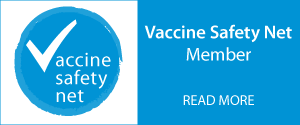Need for developing case definitions and guidelines for data collection, analysis, and presentation for IgA vasculitis (Henoch–Schönlein) as an adverse event following immunisation
IgA vasculitis (Henoch-Schönlein Purpura) (IgAV [HSP]) is one of the most common vasculitides in the pediatric population [1], [2], [3]. IgAV (HSP) is mostly seen between the age of 3 and 15 years, with a mean at diagnosis of 7 ± 3 years [4]; boys are slightly more frequently affected than girls [5]. Seasonal variation is observed, with a predominant occurrence in winter, often secondary to an upper respiratory tract infection [6].
IgAV (HSP) incidence estimates vary from 2.7 to 22.1 cases per 100,000 children [7], [8]. IgAV (HSP) is self-limited in the majority of cases, with renal involvement being the principal cause of morbidity, with potential lifelongs problems and mortality.
Skin manifestations affect virtually all of the patients and often precipitate clinical presentation. They are distributed symmetrically over the lower limbs, commonly extensor surfaces and buttocks. The arms, ears and face can also be involved, whereas the trunk is usually spared. The most frequent lesions are palpable purpura, but larger bruises, maculo-papular rash, and urticarial exanthema are also common. Haemorragic bullae and skin necrosis leading to ulcers are rare. Severity of skin lesions has no influence on prognosis. Swelling and joint pain (in 60–80% of cases an arthralgia, rather than frank arthritis) usually affect the ankles and knees, but other joints may also be involved, especially hands and feet. Abdominal symptoms occur in approximately 60% of patients, usually abdominal pain and bloody stool. However, major gastrointestinal complications develop in about 5% of patients, with intussusception being the most common. Other severe complications may also occur, such as bowel infarction, necrosis, intestinal perforation, fistula formation, acute appendicitis, severe upper gastrointestinal hemorrhage, pancreatitis, hydrops of the gall-bladder and pseudomembranous colitis. Acute scrotal inflammation in boys is less often reported with IgAV (HSP). Renal involvement (20–60%) presents in most cases within 4 weeks of disease onset, and 97% present within 3 months. Renal involvement varies widely, ranging from microscopic haematuria to macroscopic haematuria, proteinura, nephritic/nephrotic syndrome, and renal impairment. Hypertension may be associated with nephritis or be an isolated finding. Most patients with renal involvement have mild disease and recover well. About 5% have long term morbidity, including isolated proteinuria, nephritic and/or nephrotic syndrome with a progressive course resulting in renal failure or end-stage renal disease [9], [10]. Prognosis is worse in those with the most severe initial renal involvement (nephritis and/or nephrotic presentation). However, even among those who initially recover, a small number in the long term develop renal sequelae. Therefore, children with renal involvement of IgAV (HSP) need to have long-term follow-up.
The sequence of appearance of symptoms may vary. Clinical manifestations may occur in any order at any time over a period of several days or weeks. The first manifestation may be abdominal symptoms, rash, or renal symptoms, such as hematuria. On the other hand, renal involvement can appear



